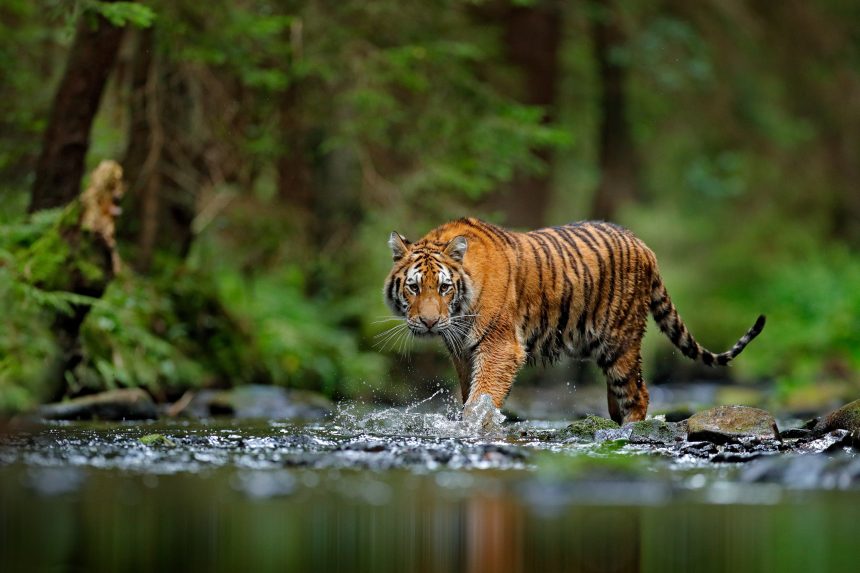In the sprawling realm of environmental conservation, a novel alliance between the behemoths of technology and the vanguards of space exploration is carving a path toward safeguarding the earth’s natural heritage. At the forefront of this pioneering endeavor is the collaboration between NASA and Google Earth, aimed at the conservation of one of Earth’s most emblematic yet vulnerable creatures: the tiger. This exploration sheds light on the dynamic fusion of cutting-edge technologies these giants are deploying to advance the cause of tiger conservation significantly.
Eyes Above: NASA’s Satellite Vigilance
NASA, globally acclaimed for its celestial voyages, has now trained its sights on Earth’s pressing environmental challenges. Utilizing its advanced satellite technology, NASA delivers indispensable data on the dynamics of forest coverage, climatic shifts, and disruptions to habitats—elements critical to the survival of the wild tiger. These space-borne sentinels are adept at capturing fluctuations in forest density, tracking illicit deforestation, and identifying habitat alterations that threaten tiger populations. The immediacy and precision of this satellite data equip conservationists with the tools needed to pinpoint areas of concern and strategize their conservation efforts effectively.
Digital Cartography: Google Earth’s Role in Habitat Mapping
Parallel to NASA’s celestial observations, Google Earth’s extensive digital mapping platform offers a granular view of our planet, tiger habitats included. Conservationists harness this technology to surveil habitat changes, follow tiger migration paths, and sculpt conservation strategies. Google Earth’s capabilities in rendering current images and detailed maps are instrumental in deciphering the intricacies of tiger corridors—vital for migration and maintaining genetic diversity. Armed with this data, conservationists can craft more nuanced approaches to safeguard these passages from encroachment and other perils.
United in Conservation
The amalgamation of NASA’s satellite insights and Google Earth’s mapping precision constitutes a formidable tool in the conservation toolkit for tigers. This collaborative data allows conservationists to:
- Identify Illegal Encroachments: Monitoring forest cover changes and spotting unauthorized clearings enables the identification of potential hotspots for illegal poaching or deforestation.
- Strategize Habitat Conservation: Detailed visual analysis of tiger domains assists in evaluating the impact of anthropogenic pressures and natural calamities, guiding targeted conservation and rehabilitation initiatives.
- Plan for the Future: Accurate geographical data simplifies the orchestration of protected areas, the enhancement of existing reserves, and the development of corridors to link tiger populations, fortifying their genetic diversity and survival prospects.
Navigating the Terrain Ahead
While the strides made by NASA and Google Earth in tiger conservation are monumental, the journey is not devoid of challenges. The fidelity of remote sensing data and its interpretation demands expertise, and on-the-ground conservation efforts require harmonization with local community engagements to thrive.
Yet, the horizon brims with possibilities. The evolving landscape of satellite and mapping technology promises even more refined tools for conservation in the foreseeable future. Moreover, the methodologies refined through tiger conservation efforts hold the potential to be adapted for broader wildlife conservation endeavors.
In Summation
The synergy between NASA and Google Earth epitomizes the potential of technological innovation to serve the planet’s ecological well-being. By furnishing critical data and analytical tools, these institutions are pivotal to the global crusade against tiger extinction. As we navigate through an era beset with environmental challenges, such innovative alliances are indispensable for the preservation of not only tigers but the myriad other species that share our world. In this confluence of technology and nature conservation, we are embarking on a new chapter where the digital and the wild coalesce to safeguard the complex mosaic of life on Earth.








